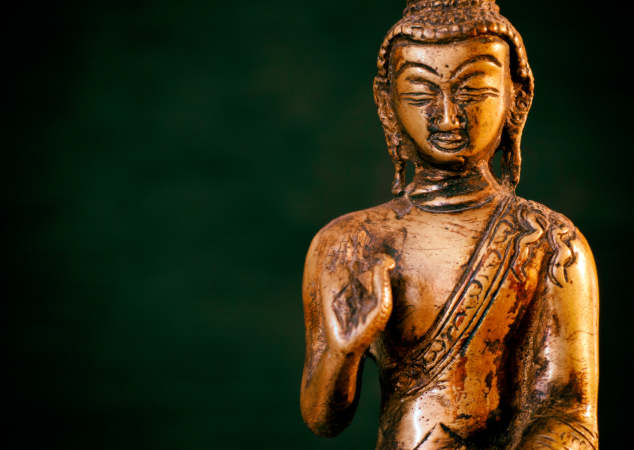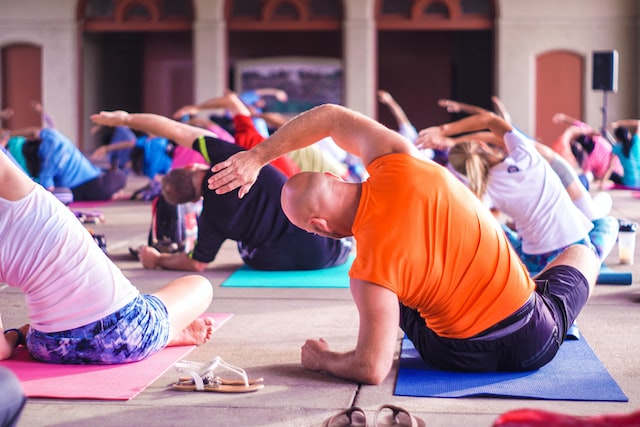Yoga for the Lower Back
Poses for your back, flexibility and strength
There are a number of different yoga poses that can help to ease lower back pain and improve your overall flexibility and strength. Here are some common yoga poses that can help to relieve lower back pain:
Child’s Pose:
This pose is great for stretching out the lower back and relieving tension. To do this pose, start on your hands and knees. Then, sit back on your heels and lower your forehead to the ground. Reach your arms out in front of you and hold for 5-10 breaths.
Cat-Cow Pose:
This pose is also great for stretching out the lower back. To do this pose, start on your hands and knees. Then, arch your back up to the ceiling as you exhale. Next, round your back down towards the floor as you inhale. Repeat this motion for at least 10 breaths.
Cobra Pose:
This pose helps to strengthen the muscles in your back and can also help to relieve pain. To do this pose, lie on your stomach with your feet hip-width apart. Place your hands on the floor next to your shoulders. Then, press into your hands and lift your chest off of the floor. Hold this pose for at least 10 breaths.
Pigeon Pose:
This pose is great for stretching out the hips and relieving lower back pain. To do this pose, start in a low lunge position with your right leg forward and your left leg back. Then, place your right ankle on top of your left thigh. Next, lower your hips down towards the floor and walk your hands out in front of you. Hold this pose for at least 30 seconds before switching sides.
Bridge Pose:
This pose helps to strengthen the muscles in your back and can also help to relieve pain. To do this pose, lie on your back with your feet flat on the floor and your knees bent. Then, press into your feet and lift your hips off of the floor. Hold this pose for at least 10 breaths.
Some additional poses to add to your routine
You can also try adding some of these additional yoga poses to your daily routine to help strengthen your core and relieve lower back pain:
Downward Facing Dog:
This pose is great for stretching out the back and improving flexibility. To do this pose, start on your hands and knees. Then, lift your hips up to the sky and press your heels back towards the floor. Hold this pose for at least 30 seconds.
Warrior I:
This pose helps to improve balance and strengthen the muscles in your legs and back. To do this pose, start in a low lunge position with your right leg forward and your left leg back. Then, raise your arms up overhead and press into your feet to straighten your legs. Hold this pose for at least 30 seconds before switching sides.
Triangle Pose:
This pose helps to improve flexibility and strengthen the muscles in your legs and back. To do this pose, start in a standing position with your feet hip-width apart. Then, step your right leg out to the side and raise your arms up overhead. Next, bend your body to the side and reach your right hand down towards the floor. Hold this pose for at least 30 seconds before switching sides.
Camel Pose:
This pose helps to improve flexibility in the spine and open up the chest. To do this pose, start by kneeling on the ground with your feet hip-width apart. Then, place your hands on your lower back and press into your hips to lift them up off of the ground. Next, lean back and reach your arms up overhead. Hold this pose for at least 30 seconds.
Corpse Pose:
This pose is great for relaxation and relieving stress. To do this pose, simply lie on your back with your feet hip-width apart and your arms relaxed at your sides. Close your eyes and focus on your breath. Stay in this pose for at least 5 minutes.
Some things to keep in mind
Try incorporating these yoga poses into your daily routine to help ease lower back pain. If you’re new to yoga, be sure to start slow and listen to your body. You should only do poses that feel comfortable and stop if you feel any pain. Remember to breathe deeply throughout each pose.
These are just a few of the many yoga poses that can help to ease lower back pain. If you are experiencing pain, it is always best to consult with a doctor or physical therapist before starting any new exercise routine.






